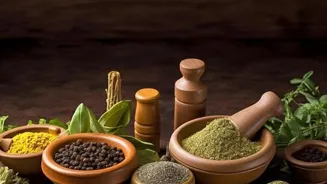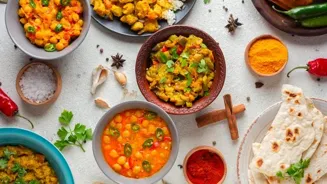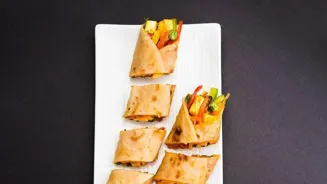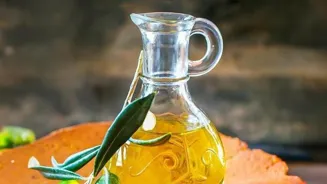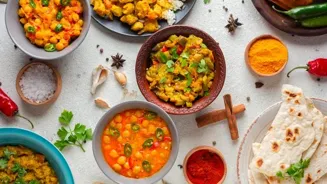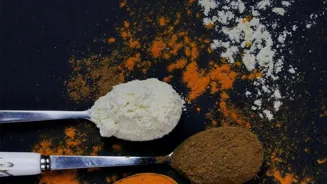Unlock the secrets of Indian cooking with 10 essential techniques! Dive into the world of vibrant spices and aromatic flavors that will elevate your culinary skills. From tempering to slow cooking, master
these techniques to become a kitchen whiz. Let's embark on a flavorful journey together!
Namaste, food lovers! Ever dreamt of creating magic in your own kitchen, dishing out aromatic and flavourful Indian meals that would make your family go "Wah!"? Well, you can! Indian cuisine, with its vibrant spices and diverse regional variations, might seem daunting at first. But fear not!
We're here to break it down for you. Forget complicated recipes and endless ingredients lists. Today, we're focusing on the core cooking techniques that form the backbone of almost every Indian dish.
Master these ten essential techniques, and you'll be well on your way to becoming a kitchen whiz, whipping up delicious vegetarian meals that will impress everyone. So, grab your apron, sharpen your knives, and let's get cooking! We'll unveil secrets to the art of Indian flavours.
Tempering spices in oil enhances flavor of Indian dishes
First, let us talk about tempering, which is also called "tadka" or "chaunk". This method means heating spices in oil or ghee (often butter) to release their aromas. Think of it as waking up the spices and making them sing!
Common spices used for tempering include mustard seeds, cumin seeds, asafoetida (hing), and dried red chillies. The hot oil helps to extract the essential oils from the spices, infusing the entire dish with their fragrant flavour.
Simply heat your oil or ghee, add your spices, let them sizzle for a few seconds until fragrant, and then pour this aromatic mixture over your dish. It's a simple step, but it makes a huge difference.
Tempering is often used at the beginning of cooking or as a final garnish to add a burst of flavour. Master this, and your dals and curries will never be the same. It instantly elevates the taste profile, creating a depth of flavour that is undeniably Indian.
Also, be absolutely careful while tempering, because too much heat will burn the spices and give a bitter taste. Be gentle to get to enjoy the real taste of the dish.
Bhuna: slow, aromatic spice frying for rich Indian dishes
Next, we have bhuna, a technique of frying spices and aromatics in oil or ghee over medium heat for an extended period. This helps to deepen their flavour and create a rich base for curries and gravies. The ingredients are stirred frequently to prevent burning and to ensure even cooking.
Bhuna also helps to evaporate excess moisture, concentrating the flavours further. This method is often used as a foundation for many North Indian dishes like chana masala or vegetable korma. Slow cooking and continuous stirring are the keys to a successful bhuna.
The longer you cook the spices, the more complex and nuanced the flavour will be. Don't rush the process; let the spices work their magic. The key is to stir regularly avoiding the burning of ingredients. Enjoy the process as it is time-consuming but it is something to be enjoyed while cooking.
This is very important and very traditional. With just a little trick and patience it will become your favourite thing.
Roasting spices intensifies flavor for authentic Indian taste
Then, we'll discuss roasting. Roasting, or "bhunao" in some regions, involves dry-roasting spices like cumin, coriander, and fennel seeds in a pan until they turn fragrant and slightly darker in colour. This intensifies their flavour and adds a smoky note to your dishes.
Once roasted, the spices are typically ground into a powder and used as a flavouring agent. Roasting is a fantastic way to enhance the flavour of homemade spice blends like garam masala or sambar powder.
The heat helps to release the essential oils and break down the cell walls of the spices, resulting in a more potent and aromatic flavour. It completely transforms the whole food. You will love it. Roasting is crucial to add authentic Indian taste.
Be careful because spices can burn quickly, so keep stirring and do not leave the pan unattended. With a little practice, you'll be able to tell by the aroma and colour when the spices are perfectly roasted.
Steaming preserves nutrients in gentle cooking, ideal for Indian cuisine and health-conscious cooking
Moving on, now, we will understand the concept of steaming. Steaming is a gentle and healthy cooking method that preserves the nutrients and natural flavours of vegetables.
In Indian cuisine, steaming is often used to cook vegetables like peas, carrots, and potatoes before adding them to curries or stir-fries. It's also a popular way to make dishes like idli and dhokla, which are light and fluffy steamed cakes perfect for breakfast or a snack.
Steaming can be done in a steamer basket over boiling water or in a pressure cooker. The key is to avoid overcooking the vegetables, so they retain their crispness and flavour. Also, steaming ensures that you keep those precious nutrients intact!
This is another great option to keep your health and taste in a perfect balance, making no compromise on both. It is like getting the best of both worlds in an effortless form which is what we all need.
Deep frying in Indian cuisine: tips for crispy snacks
Now, we come to deep frying. Deep frying, while sometimes considered less healthy, is an integral part of Indian cuisine. It's used to make crispy snacks like samosas, pakoras, and vadas, as well as fluffy breads like bhatura.
The key to successful deep frying is maintaining the right oil temperature. The oil should be hot enough to cook the food quickly and evenly, but not so hot that it burns. It's also important not to overcrowd the pan, as this will lower the oil temperature and result in soggy food.
Once fried, the food should be drained on paper towels to remove excess oil. With practice, you'll be able to master the art of deep frying and create delicious, crispy snacks that are perfect for any occasion. To be careful, while the oil is on, ensure to turn the flame off once you have finished.
This will ensure safety. Also, monitor the oil level frequently.
Slow cooking: melds flavors, easy meals with minimal effort
Finally, let's discuss slow cooking. Slow cooking, or "dum pukht" in some regions, is a technique of cooking food over low heat for an extended period. This allows the flavours to meld together and create a rich, complex taste. Slow cooking is often done in a heavy-bottomed pot or a slow cooker.
This is commonly used in dishes like biryani and dal makhani, where the long cooking time allows the spices and ingredients to infuse each other completely. The low heat ensures that the food cooks evenly and stays moist.
Slow cooking is a great way to create flavourful and comforting meals with minimal effort. Just set it and forget it and let the flavours take over. It is a technique that ensures both flavour and ease which is something that is highly valued and greatly appreciated in cooking.
This is a total game-changer for people who have minimum time to cook.

